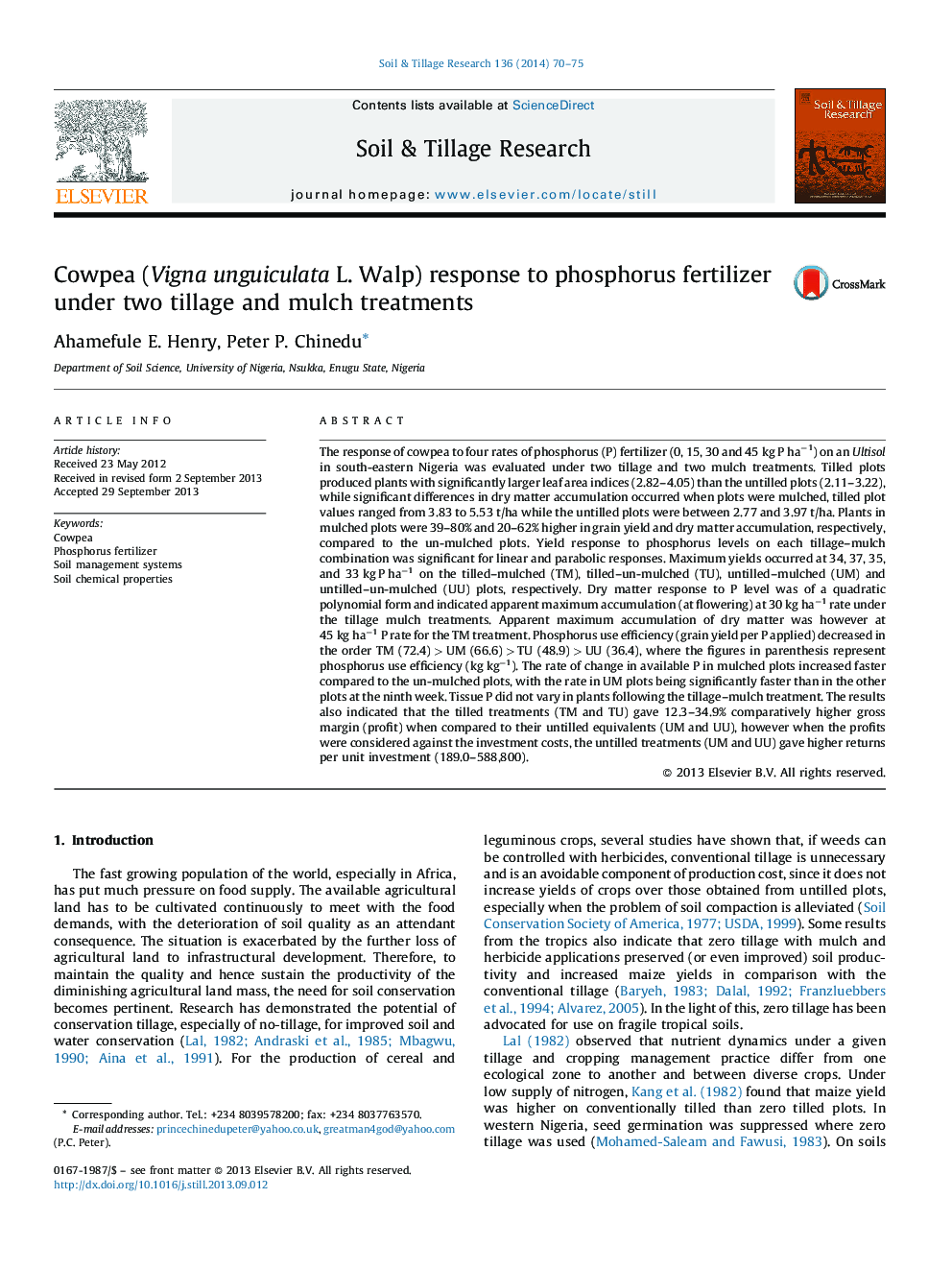| Article ID | Journal | Published Year | Pages | File Type |
|---|---|---|---|---|
| 305789 | Soil and Tillage Research | 2014 | 6 Pages |
•We evaluated the response of cowpea (Vigna unguiculata L. Walp) to four rates of phosphorus (P) fertilizer (0, 15, 30 and 45 kg P ha−1).•Yield response to phosphorus levels on each tillage–mulch combination was significant for linear and parabolic responses.•Tilled plots produced plants with significantly higher leaf area indices (2.82–4.05) than the untilled plots (2.11–3.22).
The response of cowpea to four rates of phosphorus (P) fertilizer (0, 15, 30 and 45 kg P ha−1) on an Ultisol in south-eastern Nigeria was evaluated under two tillage and two mulch treatments. Tilled plots produced plants with significantly larger leaf area indices (2.82–4.05) than the untilled plots (2.11–3.22), while significant differences in dry matter accumulation occurred when plots were mulched, tilled plot values ranged from 3.83 to 5.53 t/ha while the untilled plots were between 2.77 and 3.97 t/ha. Plants in mulched plots were 39–80% and 20–62% higher in grain yield and dry matter accumulation, respectively, compared to the un-mulched plots. Yield response to phosphorus levels on each tillage–mulch combination was significant for linear and parabolic responses. Maximum yields occurred at 34, 37, 35, and 33 kg P ha−1 on the tilled–mulched (TM), tilled–un-mulched (TU), untilled–mulched (UM) and untilled–un-mulched (UU) plots, respectively. Dry matter response to P level was of a quadratic polynomial form and indicated apparent maximum accumulation (at flowering) at 30 kg ha−1 rate under the tillage mulch treatments. Apparent maximum accumulation of dry matter was however at 45 kg ha−1 P rate for the TM treatment. Phosphorus use efficiency (grain yield per P applied) decreased in the order TM (72.4) > UM (66.6) > TU (48.9) > UU (36.4), where the figures in parenthesis represent phosphorus use efficiency (kg kg−1). The rate of change in available P in mulched plots increased faster compared to the un-mulched plots, with the rate in UM plots being significantly faster than in the other plots at the ninth week. Tissue P did not vary in plants following the tillage–mulch treatment. The results also indicated that the tilled treatments (TM and TU) gave 12.3–34.9% comparatively higher gross margin (profit) when compared to their untilled equivalents (UM and UU), however when the profits were considered against the investment costs, the untilled treatments (UM and UU) gave higher returns per unit investment (189.0–588,800).
